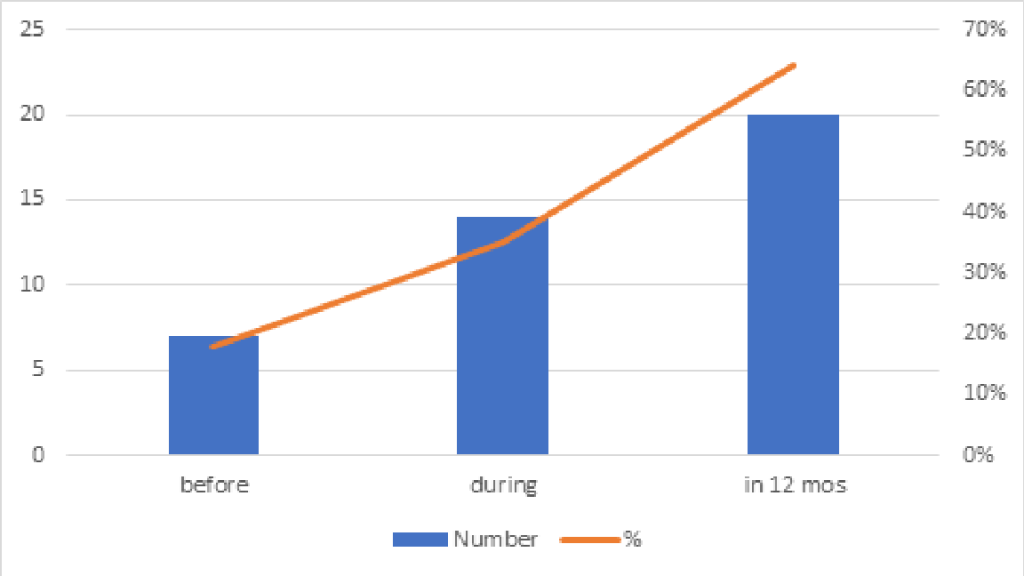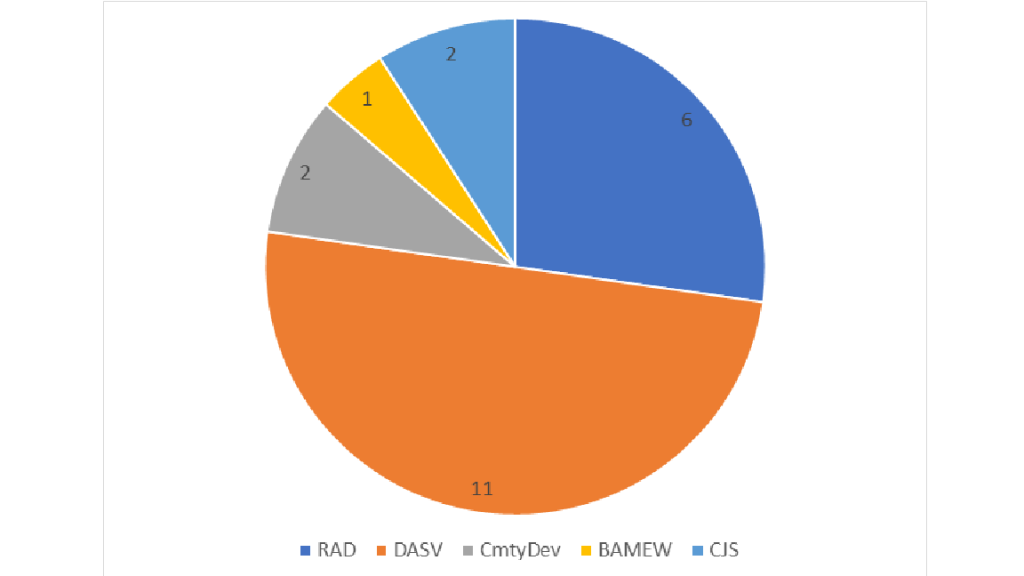Sarah Armstrong shares findings from our survey of organisations. Funding in the third sector, already typified by instability and short lifecycles, has become even more unstable during the pandemic.
Previous blogs have shared early findings from our survey, including some positives of lockdown and some of the changes in service provision. This blog discusses the financial picture for third sector organisations and service providers. Emergency funding has been a lifeline for, and widely accessed by, many. However, this now has been spent, and organisations are facing a deeply uncertain period as we move into winter. Crisis support has offered both large and small lifelines to extremely isolated and vulnerable people but it is unclear how or if such support will be renewed.
This analysis is based on the nearly half of survey respondents (31 responses, representing 30 organisations) who answered at least some finance questions (as of 2 Oct, 63 responses). Abbreviations are used for the four sectors covered in the study: Refugees and asylum-seekers facing destitution (RAD); survivors of domestic abuse or sexual violence (DASV); criminal justice system affected (CJS); and those living with disability or long-term health condition (DHC).
Sources and stability of funding
“Generally speaking our funding is now much less stable than it was before, in common with many other charities.” (CJS organisation)
“Hard to predict how stable or unstable funding will be in future but it is fair to say we are a very small charity and are always looking for funding.” (RAD organisation)
“We have to scrap around for every piece of funding opportunity.” (RAD organisation)
Three sources of funding were critical to the operation of services: Scottish Government, local authority/health and social care and charitable funding.
- 68% of organisations receiving local authority funding depended on this source (defined as having 20% or more of all income from this source; average amount of budget covered by local authority funding was 33%)
- 80% of organisations receiving Scottish Government funding were dependent on this (average amount of funding from this source was 38% of total budget)
- 70% of organisations receiving charity funding were dependent on this (average amount of charity funding as portion of total budget was 40%)
Scottish Government funding was largely felt to be ‘stable’ (55% of respondents reporting this source of income) over at least the next year. However, the other sources of funding were reported by respondents to be ‘less stable’ or ‘unstable’: 74% of those receiving local authority funding rated this as ‘less stable’ or ‘unstable’ and 67% said this about charity funding.
Concerns about finances before, during and after the pandemic
“Funding an organisation like ours is always a struggle, it has simply become much more of a struggle over the past year or so.” (Community development organisation)
Nearly a quarter of respondents (23%) said that prior to the pandemic they had ‘high’ or ‘very high’ concerns about their funding, underlining the financial precarity of the sector. When asked about the state of their finances during the pandemic, these levels increased, nearly doubling so that 45% said they had ‘high’ or ‘very high’ concerns about funding. This figure rose again when asked to assess concerns about funding over the next year, to 66% of respondents.
Respondents rating funding as a ‘high’ or ‘very high’ concern at different points of the pandemic (n=31)

The pandemic seems to have intensified a feeling of funding instability that is part of the normal experience of service organisations. There is a concern not only about the increased costs of adapting to Covid-19 related lockdown (such as transitioning to online services) but wider economic instability and the impact of this on funding availability:
“The economy has taken a battering as well, which in turn may reduce the available income of charitable funders due to a downturn in their investment income. We are keeping a close eye on this.” (CJS organisation)
Emergency funding
Most respondents sought, and also received, emergency grants to support their work: of 28 applying for emergency or crisis funding, 86% were successful (24 organisations; four were unsuccessful). Two of the unsuccessful organisations were in the CJS area; the other two were a DHC organisation and a refugee and asylum seeker’s organisation.
The figure below shows successful emergency grant applications by sector. The number of DASV organisations (11) successfully applying for grants is the same as for all other sectors combined (and the one successful BAME women’s organisation also works to some extent with women in abusive situations). The second largest category receiving emergency funding was the RAD sector. This may not be surprising as many RAD and DASV organisations provide refuge accommodation, and the loss and need for safe housing has been on the Government radar from early in the pandemic.
Emergency funding by sector (n=22)

Emergency and crisis funding has supported organisations in several clearly identified areas, underlining the primary areas of need:
- emergency accommodation costs (including offsetting loss of housing benefit for some)
- food provision
- digital/technological inclusion for both staff and service users
- wellbeing support
Comments from respondents detailing how emergency grants were used convey this:
food preparation, delivery, baby and mum provisions, travel expenses, unconditional cash grants up to £50, phone top ups (RAD organisation)
IT provision for staff working from home (DASV organisation)
buying food and laptops for the families (RAD organisation)
to support service users ensuring they have access to internet through the provision of dongles, tablets etc and provision of supermarket vouchers and tops ups for phones and utilities and wellbeing pack (DASV organisation)
the costs of moving to home working and remote delivery of support (DASV organisation)
Conclusion
Some noted that emergency funding was fairly accessible and generous early in the pandemic lockdown buffering the impact on organisations and their services:
“The pandemic has, bizarrely, created a short-term ‘windfall” in terms of availability of funding.” (CJS organisation)
We are now entering the seventh month of Covid-19 restrictions with furlough schemes ending, cases spiking and colder temperatures of the autumn and winter coming. The need for supplemental and more stable sources of income for frontline services will not be decreasing, and crisis funds have now been spent. Uncertainty about the future was a theme raised in comments and it is difficult to imagine maintaining even close to a similar level of services without another round of emergency funding or more stable support.
Some costs have been one-off, such as buying equipment, enabling staff to work from home, or for service users to keep in touch with services that are now online. Other costs have been for basic needs that will be ongoing – food, housing, mobile phone top-ups.
A final note related to emergency funding during the pandemic is the extent to which small amounts have been a lifeline for service users. One month of phone data, £50 in cash, a food delivery, a wellbeing pack – these have been common means of providing crisis support to clients. These direct forms of support often are carried out by the smaller organisations, and those working in domestic abuse or refugee/asylum areas.
Sarah Armstrong (@SarahAinGlasgow) is Professor of Criminology at the University of Glasgow and co-lead of the Scotland in Lockdown study.
Description of charts on this page
The first graph on this page shows respondents rating funding as a ‘high’ or ‘very high’ concern at different points of the pandemic
It shows that 66% of respondents have ranked funding as a ‘high’ or ‘very high’ concern over the next 12 months.
The second chart on this page shows emergency funding by sector. It shows that the number of domestic abuse and sexual violence service providers have applied for emergency funding the most, followed by the refugee and asylum service providers.